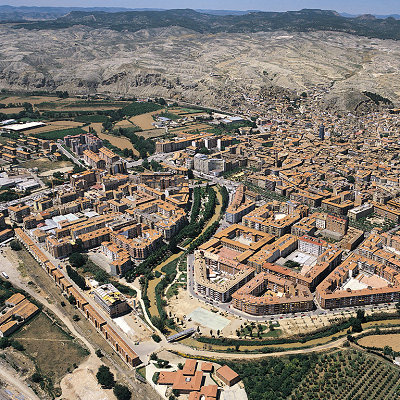
Like us on Facebook
PLACE NAMES




|
|
Calatayud
|

|
|
Calatayud is a municipality in the Province of Zaragoza, within Aragon, Spain, lying on the river Jalon, in the midst of the Sistema Iberico mountain range. It is the second-largest town in the province after the capital, Zaragoza, and the largest town in Aragon other than the three provincial capitals. It is the seat of the comarca of Calatayud.
The city has the title Muy noble, leal, siempre augusta y fidelisima ciudad de Calatayud ("The very noble, loyal, always august and most faithful City of Calatayud"). The first democratic elections after General Franco's regime were called for 15 June 1977. In Calatayud they were held one day earlier than all the rest of Spain, in order to prepare for a visit there by King Juan Carlos I.
The city was founded on the site of a Celt-Iberian settlement by the Romans with the name Augusta Bilbilis and was the birthplace of the poet Martial in 40 CE. The site of the ruins of Augusta Bilbilis are approximately four kilometers to the north of the modern city of Calatayud. The modern town was founded by the Moors around the Ayyub castle, circa 716 CE.
The name Calatayud came from the Arabic Qalat 'Ayyub = "Ayyub's castle" (Ayyub is a fairly common Arabic given name). The ancient inhabitants of Bilbilis moved to the new site. Occupying a strategic placement between the central meseta of Spain and the Ebro valley the city retained its importance in succeeding centuries. By the eleventh century a substantial Jewish community was present, surviving the reconquista until the expulsion of the Jews from Spain in 1492. The city was conquered from the Muslims by Alfonso I of Aragon in 1119. Many surviving examples of mudejar church architecture show that the Moorish influence lived on.
During the Peninsular Wars a notable siege of French occupied Calatayud led to its capture by guerillas in 1811. The city was the capital of its own province in 1822-23, during the Trieno Liberal.
The town suffers from sinkholes.
 Feel free to Email me any additions or corrections Feel free to Email me any additions or corrections
LINKS AVAILABLE TO YOUR SITE
| | |





